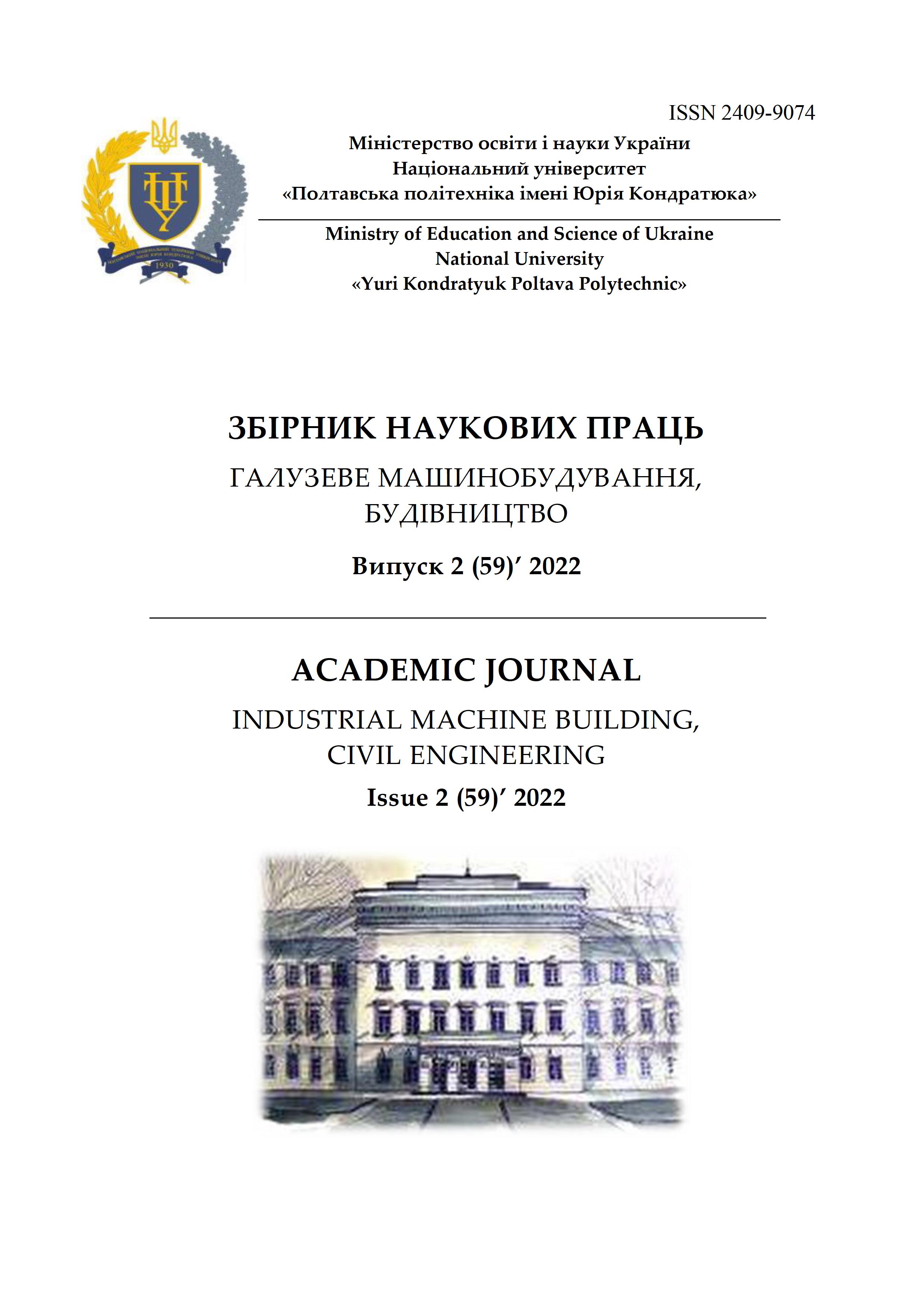Correlation equation between physical and mechanical properties of sedimentary rocks
DOI:
https://doi.org/10.26906/znp.2022.59.3104Keywords:
sedimentary rock, penetration, humidity, specific penetration resistance, strength, deformation modulus, elationshipAbstract
The results of parallel experimental studies of the physical and mechanical properties of sedimentary rocks of natural structure, including their penetration tests, are presented. The possibility of establishing empirical equations of the relationship between the physical (soil skeleton density and moisture content) and mechanical (specific resistance to penetration, angle of internal friction, specific adhesion, deformation modulus) characteristics of cohesive (on the example of light dusty loams of loess origin) and non-cohesive (on the example of fine sands, quartz) sedimentary rocks of natural structure is tested. It is noted that such equations are correct only for genetically identical types of sedimentary rocks
References
Jaeger J.C/, Cook N.G.W. & Zimmerman R. (2007) Fundamentals of Rock Mechanics. Wiley-Blackwell.
Xing Y., Kulatilake P. & Sandbak L. (2019). Rock Mass Stability Around Underground Excavations in a Mine. London. CRC Press.
doi.org/10.1201/9780429343230 DOI: https://doi.org/10.1201/9780429343230
Briaud J.-L. (2013). Geotechnical Engineering: Unsaturated and Saturated Soils. Wiley. DOI: https://doi.org/10.1002/9781118686195
Vynnykov Yu.L., Kharchenko М.О. & Lopan R.M., Manzhaliy S.M. (2017). Geotechnical properties of foundations for mining complex: Monograph. Poltava: PolNTU named after Yuri Kondratyuk.
Chang C., Zoback M.D. & Khaksar A. (2006). Empirical relations between rock strength and physical properties in sedimentary rocks. Journal of Petroleum Science and Engineering. Vol. 51, Is.3–4, 223-237. DOI: https://doi.org/10.1016/j.petrol.2006.01.003
https://doi.org/10.1016/j.petrol.2006.01.003 DOI: https://doi.org/10.1055/s-2006-934212
Baligh M.M., Vivatrat V. & Ladd C.C. (1980). Cone penetration in soil profiling. Journal of Geotechnical and Geoenvironmental Engineering, vol. 106. DOI: https://doi.org/10.1061/AJGEB6.0000948
Razorenov V.F. (1980). Soil penetration testing. M.: Stroyyzdat.
Zotsenko N. & Vynnykov Y. (1999). Rapid Investigation Methods of Soil Properties and Interpretation of their Results for Bridge Foundations Design. IABSE New Delhi Colloquium reports on “Foundations for Major Bridges: Design and Construction”. New Delhi, 19-24.
Powell J.J.M., Shields C.H. & Wallace C.F. (2015). Liquid Limit testing – only use the Cone Penetrometer! Proc. of the XVI ECSMGE Geotechnical Eng. for Infrastructure and Development. Edinburg, 3305-3310.
Uhlig M. & Herle I. (2015). Advanced analysis of cone penetration tests. Proc. of the XVI ECSMGE Geotechnical Eng. for Infrastructure and Development. Edinburg, 3073-3078.
https://doi:10.1680/ecsmge.60678
Zotsenko M., Vynnykov Yu., Kharchenko M., Matyash O. & Vovk M. (2023). Improvement of the investigation of physical and mechanical characteristics of sedimentary rocks by express methods. Key trends of integrated innovation-driven scientific and technological development of mining regions. Petroșani, Romania: UNIVERSITAS Publishing, 264-279.
https://ep3.nuwm.edu.ua/id/eprint/25919
Zotsenko M., Vynnykov Y. & Yakovlev A. (2010). Modern practice of determination of strength characteristics of cohesive soils by penetration methods. Proc. of XIVth Danube – European Conf. on Geotechnical Eng. Bratislava: Slovak University of Technology. 245-253.
Zotsenko M.L. (2005). The use of "tails" of the Poltava mining and beneficiation plant in the construction of earthen structures. The world of geotechnics. N4, 7-11.
Zotsenko M. & Vynnykov Yu. (2019). Foundations, Arranged without Soil Excavation: Monograph. Poltava: PolNTU named after Yuri Kondratyuk, 2019.
Vynnykov Yu.L. & Aniskin A. (2019). Practical problems of anistropic soil mechanics: Monograph. Varazdin: University North, Croatia.
Downloads
Published
How to Cite
Issue
Section
License
Copyright (c) 2022 Mykola Zotsenko, Yuriy Vynnykov, Maksym Kharchenko, Marina Rybalko, Aleksej Aniskin

This work is licensed under a Creative Commons Attribution-NonCommercial-NoDerivatives 4.0 International License.
Published 2022-12-17




